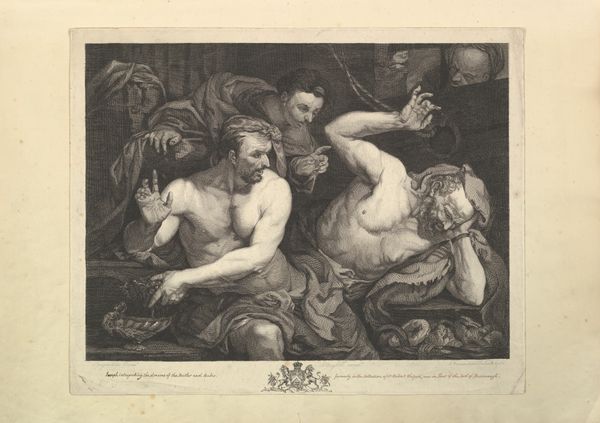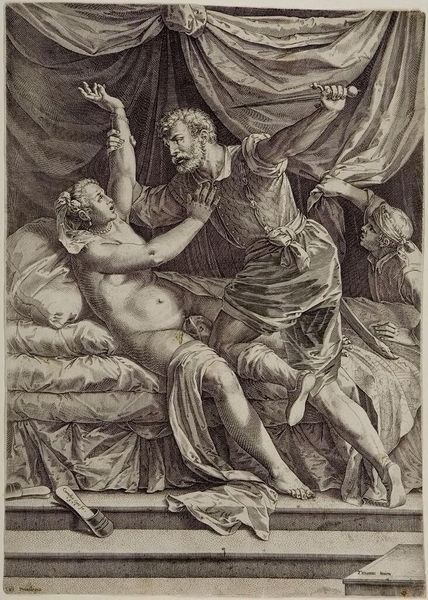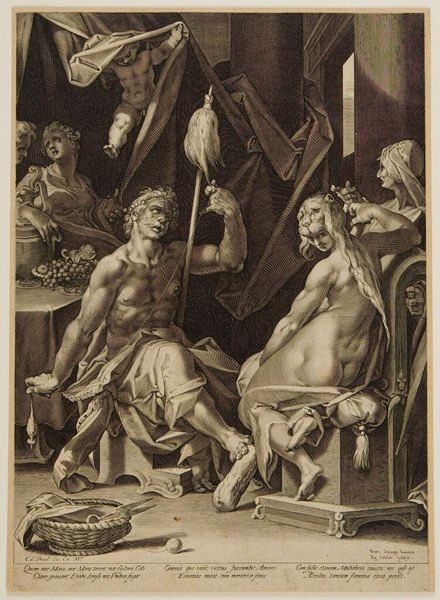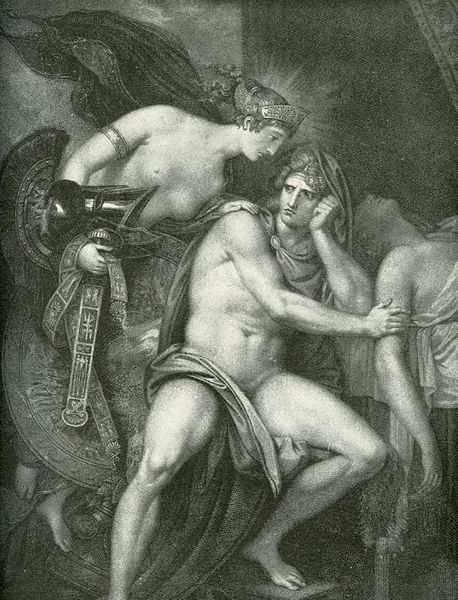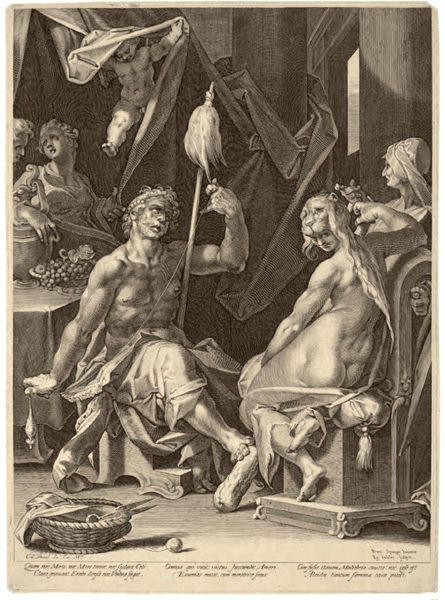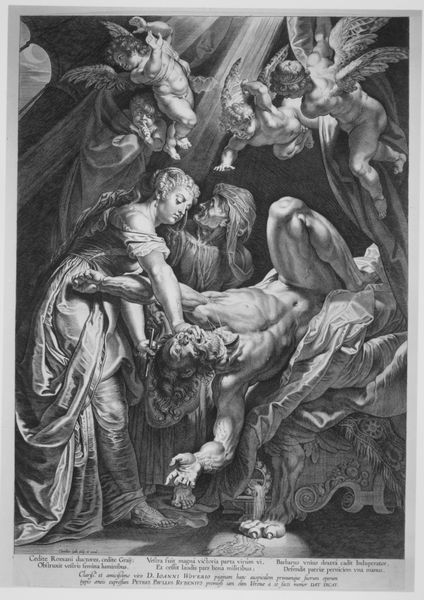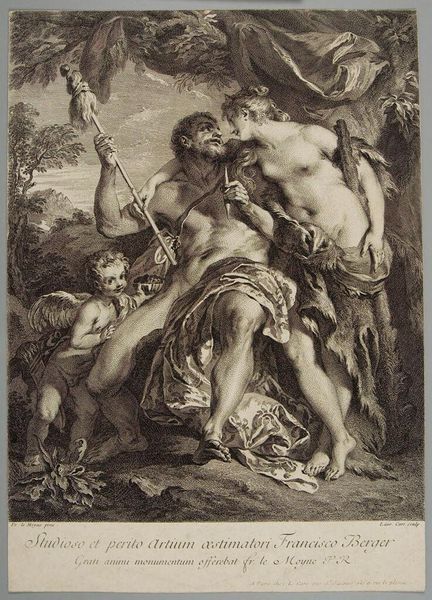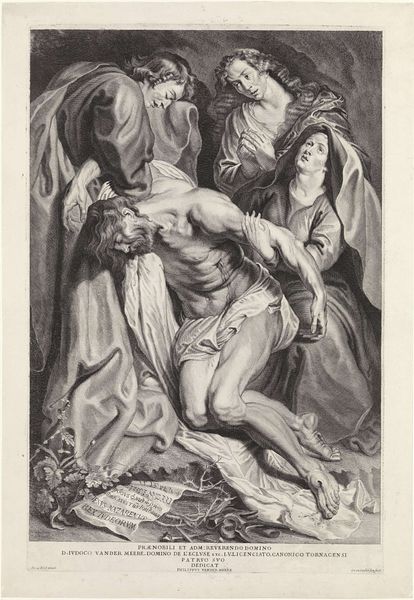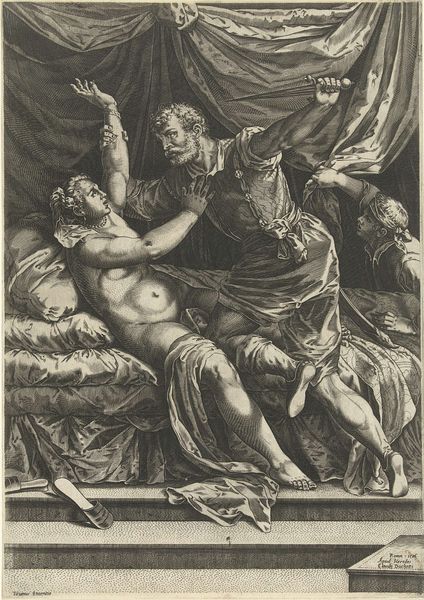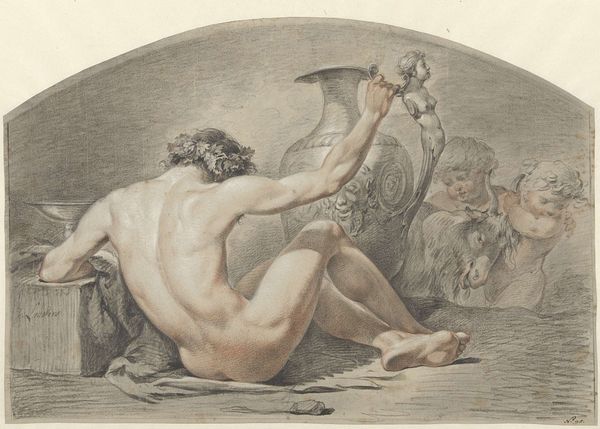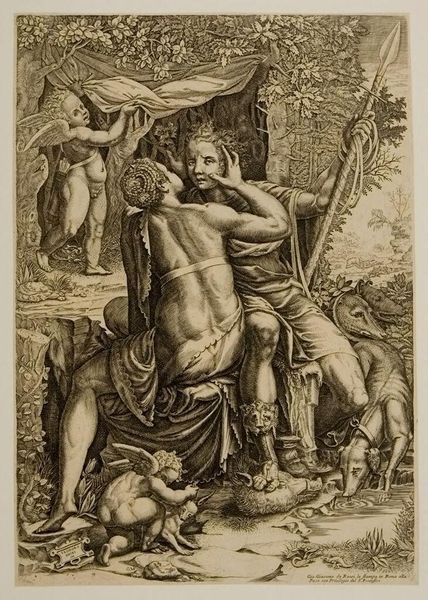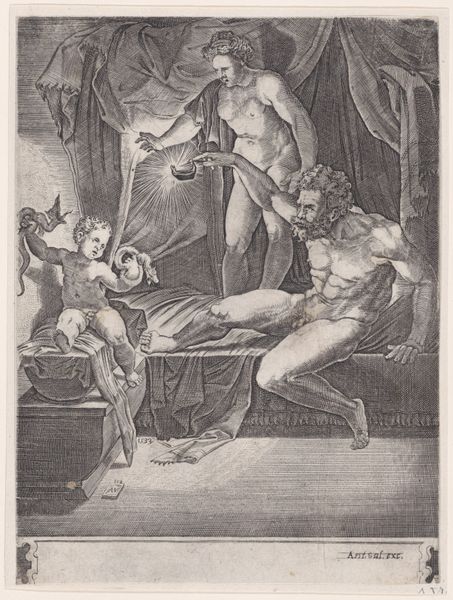
Joseph Interpreting the Dreams of Pharoh's Butler and Baker 1766
Copyright: CC0 1.0
Editor: This is Alexander Bannerman's "Joseph Interpreting the Dreams of Pharaoh's Butler and Baker." It feels like a stage play, full of drama. The figures are so expressive. What do you see in this piece, beyond the biblical narrative? Curator: It’s fascinating how Bannerman uses the visual language of imprisonment – the chains, the cramped space – to represent psychological states. Dreams, after all, were considered powerful indicators of fate. Notice how Joseph, bathed in light, seems almost untouched by the darkness surrounding him. What kind of power dynamic do you perceive? Editor: Well, Joseph seems like he's in control, almost detached. But the others seem consumed by their anxieties. Curator: Precisely! The gestures, the facial expressions – they're all signifiers of inner turmoil. It's a study of how we interpret signs and symbols, and how those interpretations shape our reality. Editor: I hadn't thought of it that way, as a commentary on interpretation itself. Curator: Yes, and consider the cultural weight of dreams in the 18th century, when this was made. It’s potent with a shared cultural memory of divinity and delusion. Editor: This really helps me understand how much more there is to this picture.
Comments
No comments
Be the first to comment and join the conversation on the ultimate creative platform.
